Digital Self: How We Became Binary
Само за регистроване кориснике
2015
Књига (Објављена верзија)

Метаподаци
Приказ свих података о документуАпстракт
Th e ubiquitous use of digital technology in all aspects of daily life has opened
up unprecedented possibilities such as immediate access to information, (tele)
presence at any place on the planet, multiplication and modifi cation of identity,
as well as rearticulation and reconstruction of embodiment. In cyberpunk literature, new media art practices, cyber theories, SF fi lms and comic books, and
scientifi c research, there is oft en a tendency to leave the mortal physical body,
behind in order to upload the immortal mind into the vast realm of the digital
where one can be whatever or whomever s/he wants. In relation to modern technology, the biological body is oft en regarded as obsolete for not being “equipped”
to cope with the exponential speed of technological development. Hence, it is
not surprising that many studies ignore the problem of embodiment by focusing more on the issues of identity, consciousness and disembodiment in digital
worlds. Th erefore, this boo...k will attempt to highlight those theories that focus on
embodiment in technologically mediated environments, thus reintegrating the
physical body into discussions of new media phenomena and the ways they aff ect
social reality today. In this book I will start from the hypothesis that without the
physical body there is no virtual or real. Th e aim is to underline the signifi cance
of physical body in biotechnological interfaces, and to discuss and analyze the
ways in which the role of body and embodiment changes in ubiquitous virtual
environments, as well as to map the ways in which technology alters bodily functions thus aff ecting ontological survival of humans as biological species.
Кључне речи:
body / embodiment / physical body / new mediaИзвор:
2015Издавач:
- Plzeň: University of West Bohemia
Финансирање / пројекти:
- Norwegian Financial Mechanism 2009-2014 and the Ministry of Education, Youth and Sports under Project Contract no. MSMT-28477/2014, Project no. 7F14236.
Колекције
Институција/група
IFDTTY - BOOK AU - Guga, Jelena PY - 2015 UR - http://rifdt.instifdt.bg.ac.rs/123456789/2459 AB - Th e ubiquitous use of digital technology in all aspects of daily life has opened up unprecedented possibilities such as immediate access to information, (tele) presence at any place on the planet, multiplication and modifi cation of identity, as well as rearticulation and reconstruction of embodiment. In cyberpunk literature, new media art practices, cyber theories, SF fi lms and comic books, and scientifi c research, there is oft en a tendency to leave the mortal physical body, behind in order to upload the immortal mind into the vast realm of the digital where one can be whatever or whomever s/he wants. In relation to modern technology, the biological body is oft en regarded as obsolete for not being “equipped” to cope with the exponential speed of technological development. Hence, it is not surprising that many studies ignore the problem of embodiment by focusing more on the issues of identity, consciousness and disembodiment in digital worlds. Th erefore, this book will attempt to highlight those theories that focus on embodiment in technologically mediated environments, thus reintegrating the physical body into discussions of new media phenomena and the ways they aff ect social reality today. In this book I will start from the hypothesis that without the physical body there is no virtual or real. Th e aim is to underline the signifi cance of physical body in biotechnological interfaces, and to discuss and analyze the ways in which the role of body and embodiment changes in ubiquitous virtual environments, as well as to map the ways in which technology alters bodily functions thus aff ecting ontological survival of humans as biological species. PB - Plzeň: University of West Bohemia T1 - Digital Self: How We Became Binary UR - https://hdl.handle.net/21.15107/rcub_rifdt_2459 ER -
@book{
author = "Guga, Jelena",
year = "2015",
abstract = "Th e ubiquitous use of digital technology in all aspects of daily life has opened
up unprecedented possibilities such as immediate access to information, (tele)
presence at any place on the planet, multiplication and modifi cation of identity,
as well as rearticulation and reconstruction of embodiment. In cyberpunk literature, new media art practices, cyber theories, SF fi lms and comic books, and
scientifi c research, there is oft en a tendency to leave the mortal physical body,
behind in order to upload the immortal mind into the vast realm of the digital
where one can be whatever or whomever s/he wants. In relation to modern technology, the biological body is oft en regarded as obsolete for not being “equipped”
to cope with the exponential speed of technological development. Hence, it is
not surprising that many studies ignore the problem of embodiment by focusing more on the issues of identity, consciousness and disembodiment in digital
worlds. Th erefore, this book will attempt to highlight those theories that focus on
embodiment in technologically mediated environments, thus reintegrating the
physical body into discussions of new media phenomena and the ways they aff ect
social reality today. In this book I will start from the hypothesis that without the
physical body there is no virtual or real. Th e aim is to underline the signifi cance
of physical body in biotechnological interfaces, and to discuss and analyze the
ways in which the role of body and embodiment changes in ubiquitous virtual
environments, as well as to map the ways in which technology alters bodily functions thus aff ecting ontological survival of humans as biological species.",
publisher = "Plzeň: University of West Bohemia",
title = "Digital Self: How We Became Binary",
url = "https://hdl.handle.net/21.15107/rcub_rifdt_2459"
}
Guga, J.. (2015). Digital Self: How We Became Binary. Plzeň: University of West Bohemia.. https://hdl.handle.net/21.15107/rcub_rifdt_2459
Guga J. Digital Self: How We Became Binary. 2015;. https://hdl.handle.net/21.15107/rcub_rifdt_2459 .
Guga, Jelena, "Digital Self: How We Became Binary" (2015), https://hdl.handle.net/21.15107/rcub_rifdt_2459 .

